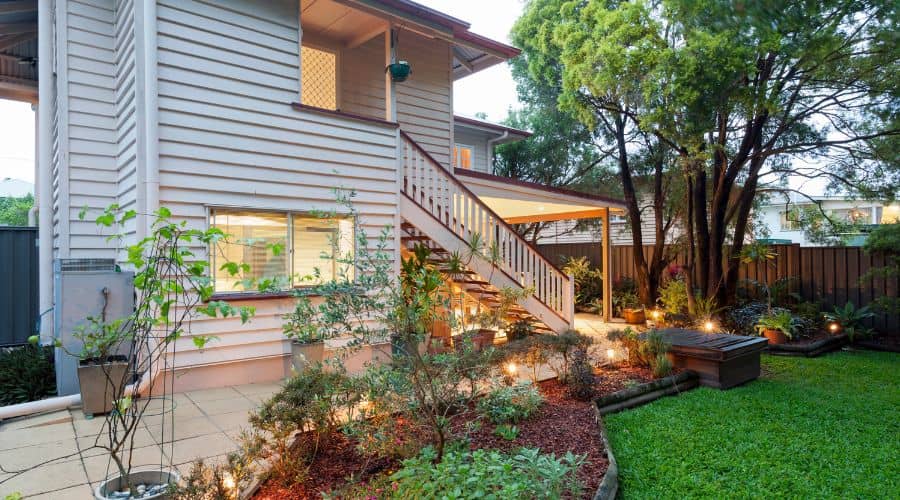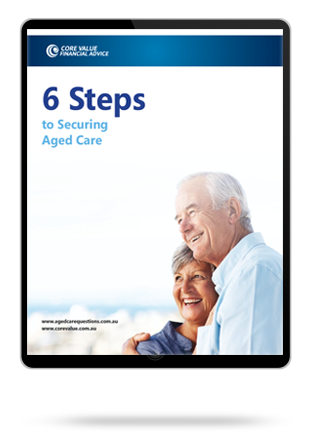Deciding whether to sell a home or rent it to pay for aged care is probably the largest financial decision that you will need to make in relation to determining how aged care fees should be funded.
I’m going to explain everything you need to know about renting the home to pay for aged care, including the benefits of doing so, how rental income is assessed by Centrelink and how renting the home impacts aged care fees.
In This Article
Renting Home to Pay for Aged Care: How Does It Work?
If you are assisting someone with a move into aged care, they might be leaving a home behind and you’re wondering what to do with it. Should you keep it and rent it, or sell it?
There is no requirement to sell the home when you move into aged care. In fact, it can be more beneficial to keep the home and rent it.
Renting the home to pay for aged care works the same way as renting any other house. A tenant moves in, pays rent and that rental income is used in conjunction with other sources of income, such as Age Pension payments and superannuation to cover aged care fees.
However, the decisions you make as to whether the home is retained or sold will not only affect Aged Care fees, but will also impact Centrelink Age Pension payments.
Should The Home Be Rented to Pay for Aged Care?
Renting the former-home to pay for aged care fees can be beneficial for three main reasons:
- Source of Income – The rent received is a source of income that can assist with aged care fees.
- Aged Care Fees – If the former-home is retained, only up to a maximum limit of $197,735 of the home value is assessed for aged care fee purposes.
- Age Pension Assessment – A value of a former-home rented out is not assessed under the Assets Test for Age Pension purposes for the first two years of moving into aged care.
Therefore, not only does renting the home help to cover aged care costs, but those aged care costs could be lower due to the limit on the value of the home and it could result in higher Age Pension payments.
But, while there are benefits of renting the home to pay for aged care, there are also risks and disadvantages.
Risks of Renting the Home to Pay for Aged Care
The downside of renting the home to pay for aged care includes a number of risks and disadvantages, including:
- Illiquidity – By retaining and renting the home, you won’t have access to as many funds as you would if you were to sell it. This might limit the amount you can contribute towards the Refundable Accommodation Deposit (RAD), effectively resulting in higher aged care costs in the form of a Daily Accommodation Payment (DAP). Funds might also be needed to cover any shortfall in income each month.
- Management & Costs – Retaining the home and renting it adds another level of complexity and could incur continued costs, such as real estate agent fees, maintenance, etc.
- Aged Care Assessment – While there will be a limit on the value of the home assessed for aged care purposes, the rental income will be assessed.
- Centrelink Age Pension Assessment – While the home will be exempt from Age Pension assessment for the initial two years, it would remain fully exempt indefinitely if the same value was, instead, contributed towards the RAD.
These risks and disadvantages should be weighed up against the benefits of retaining and renting the home to pay for aged care.
Related Article: Is the Family Home Counted as an Asset for Aged Care?
Is Rental Income Considered Income by Centrelink?
Rental income is considered income by Centrelink for both Age Pension purposes and aged care fee purposes. Therefore, it can affect not only the amount of Age Pension payments received, but also the aged care fees payable.
Let’s take a look at each assessment individually.
Rental Income & Aged Care Fees
Rental income from a former-home is assessed for aged care fee purposes under the Means-Tested Fee. The Means-Tested Care fee has both an income assessment component and an assets test component. The total amount of rental income received counts towards the income assessment in calculating the Means Tested Care fee.
Rental Income & the Age Pension
Rental income from a former-home is also assessed by Centrelink for Age Pension purposes, to calculate the amount of payments you are eligible for.
The Age Pension assessment separately has an Income Test and Assets Test. The test that results in you receiving the lowest level of Age Pension payments is the test and resulting payments that will apply. The total amount of rental income received counts towards the Income Test assessment.
How Do I Know Whether I Should Rent the Home or Sell It?
There are a few things to consider and each situation will be different. Unfortunately, there is no one-size-fits-all strategy or rule-of-thumb. You not only need to figure out the best financial strategy, but also ensure that aged care fees will be covered for the remainder of the resident’s life. Otherwise, you could be stuck footing the bill.
Professional aged care financial advice can alleviate the stress of decision-making and provide a financially beneficial outcome, likely outweighing the advice fee.
At Core Value Aged Care Advice, we will help you navigate the complexities of aged care and find the best financial solutions for your family. If you have any questions or concerns regarding your situation, please call us on 1300 944 011 to speak with an expert aged care adviser today.
Frequently Asked Questions
Here are some frequently asked questions around renting the home to pay for aged care.
Can I Rent My Mum’s House to Pay for Her Care?
You can rent your mum’s house to pay for her care. The home will continue to be owned by your mum. She will continue to be assessed as a homeowner for Centrelink Age Care purposes for the initial 2 years of moving into care and her home value will be exempt from Age Pension assessment. After that, the total value of the home will be assessed and she will be treated as a non-homeowner.
For aged care fee purposes, the value of the home up to the Home Exemption Cap will be assessed. All rental income received will be fully-assessed for Age Pension and Aged Care purposes. All rental income should be attributed to your mother and paid into her bank account.
What is a Protected Person for Aged Care Purposes?
A protected person for aged care purposes includes:
- A partner;
- A dependant child;
- A carer eligible for income support payments who has lived in the home for at least 2 years; or
- A close relative eligible for income support payments who has lived in the home for at least 5 years
You might also like:
- Aged Care Family Home Exemption
- How To Avoid Selling Home To Pay for Care Australia
- Is the Family Home Counted as an Asset for Aged Care
- Do I Have To Sell Home To Pay for Care?

Hi, I hope you found this article useful.
If you wish to discuss your situation and what strategies may be of benefit please contact us here
Thanks - Shane


